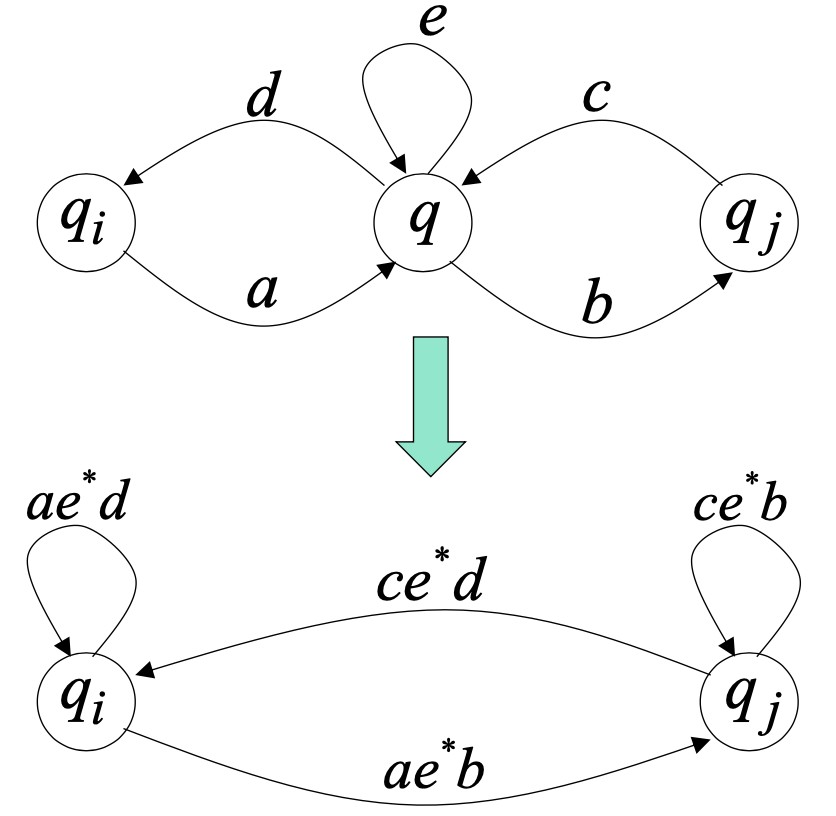5. Regular Expressions
Jan 20/25, 2022
Regular expressions
-
describe regular languages
-
primitive expressions:
-
given regular expressions
e.g. -
Regular expressions and regular languages
-
For any regular expression
-
Proof steps: show that languages generated by REs
-
languages generated by REs
=> proof by induction on the size-
base case primitive expressions:
-
inductive step: suppose regular expressions
-
by inductive hypothesis we know
-
-
-
-
using the regular closure of operations we can construct recursively the NFA
-
-
languages generated by REs
=> show that for any regular language L there is a regular expressions-
since
-
from
-
reduce the states recursively
2-state general case:

- repeat until two states are left to obtain the resulting regular expression
-
-
Standard representations of regular languages: DFAs, NFAs, regular expressions